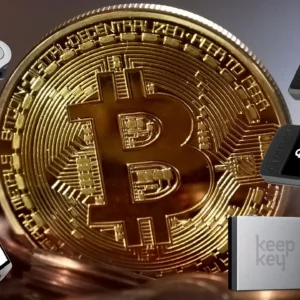Introduction
The cryptocurrency market is known for its extreme volatility, and meme coins like Shiba Inu (SHIB) have experienced significant price swings over time. Recently, SHIB’s bearish movement has raised concerns among investors, leading many to explore alternative investment opportunities. While SHIB once captured the attention of retail traders and meme coin enthusiasts, its recent downtrend has highlighted the need for more sustainable tokenomics.
Amidst this uncertainty, Cutoshi’s deflationary tokenomics is emerging as a game-changer, offering a more robust financial model designed to counter inflation and create long-term value. Unlike SHIB and other inflationary tokens, Cutoshi employs a deflationary mechanism that actively reduces supply over time, increasing scarcity and driving value appreciation.
In this article, we’ll analyze SHIB’s bearish movement, explore the limitations of its economic model, and examine how Cutoshi’s deflationary tokenomics is set to disrupt the market. As investors seek stability and long-term growth, understanding these shifting dynamics is crucial for making informed investment decisions.

1. SHIB’s Bearish Movement: Analyzing the Decline
SHIB, which gained popularity as the “Dogecoin killer,” saw an unprecedented rise in 2021, making early investors substantial profits. However, like many other meme coins, its price has struggled to maintain momentum. SHIB’s bearish movement can be attributed to several key factors:
1.1 Oversupply and Inflationary Model
One of the major issues with SHIB is its massive circulating supply. With quadrillions of tokens in existence, maintaining scarcity and long-term value growth is difficult. Unlike Bitcoin, which has a fixed supply of 21 million, SHIB’s inflationary model dilutes its value over time.
1.2 Declining Hype and Market Sentiment
SHIB initially thrived on community hype and social media-driven speculation. However, as new meme coins and utility-based projects emerge, SHIB’s novelty is wearing off. Without strong fundamentals to support its price, SHIB’s bearish movement continues as retail investors look for better opportunities.
1.3 Market-Wide Downtrend and Macroeconomic Factors
Broader market conditions have also played a role in SHIB’s decline. Rising interest rates, regulatory uncertainty, and macroeconomic factors have negatively impacted speculative assets, including meme coins. As investors shift their focus to projects with real-world utility, SHIB struggles to maintain its former dominance.
With these challenges in mind, many investors are exploring alternative projects with stronger tokenomics, such as Cutoshi.
2. Cutoshi’s Deflationary Tokenomics: A New Era of Crypto Economics
Unlike SHIB, which suffers from an oversupply issue, Cutoshi’s deflationary tokenomics is built to create sustainable value by reducing the total token supply over time. This unique economic model makes it an attractive option for investors seeking long-term gains.
2.1 How Deflationary Tokenomics Works
Deflationary cryptocurrencies use mechanisms such as token burns and transaction fees to systematically reduce supply. This ensures that as demand increases, the remaining tokens become scarcer and more valuable.
Cutoshi implements multiple deflationary mechanisms, including:
- Automated token burns: A portion of every transaction is permanently removed from circulation.
- Buyback and burn programs: The project actively buys back tokens from the market and burns them.
- Transaction taxes and redistribution: A percentage of transaction fees is used to reward holders, incentivizing long-term holding.
2.2 The Advantages of Cutoshi Over SHIB
While SHIB relies heavily on community hype, Cutoshi’s deflationary tokenomics provides tangible economic benefits. Here’s why investors are shifting their attention:
- Scarcity and value appreciation: Unlike SHIB’s inflationary supply, Cutoshi ensures that its supply decreases over time, creating a sustainable price floor.
- Stronger investor incentives: With rewards for long-term holders, Cutoshi encourages a more stable investor base.
- Built-in mechanisms to prevent dumping: The gradual reduction in supply discourages short-term speculation and pump-and-dump schemes.
By leveraging deflationary principles, Cutoshi’s deflationary tokenomics has the potential to disrupt the market and redefine how value is preserved in the crypto space.
3. How Cutoshi Can Disrupt the Market
The cryptocurrency landscape is constantly evolving, and projects with strong fundamentals are gaining traction over hype-driven assets. Cutoshi’s deflationary tokenomics positions it as a formidable force in the market.
3.1 Addressing Market Volatility
One of the biggest challenges in crypto is price volatility. Since meme coins like SHIB rely on speculative trading, they often experience sharp price swings. Cutoshi’s model reduces market instability by ensuring a steady decrease in supply, helping maintain price stability over time.
3.2 Encouraging Long-Term Holding
SHIB has suffered from frequent sell-offs, as traders capitalize on short-term gains. Cutoshi, on the other hand, rewards holders through deflationary mechanisms, creating an ecosystem where investors are incentivized to hold rather than sell. This reduces selling pressure and fosters long-term price appreciation.
3.3 Establishing a More Sustainable Economic Model
Projects that rely solely on hype tend to collapse once interest fades. Cutoshi’s deflationary tokenomics ensures that value is preserved even during market downturns, making it an attractive choice for both retail and institutional investors. By offering a more sustainable alternative, Cutoshi is set to disrupt the market and challenge the dominance of traditional meme coins.
4. What This Means for Crypto Investors
As SHIB’s bearish movement continues, investors are looking for projects with stronger economic fundamentals. The rise of Cutoshi’s deflationary tokenomics presents a promising opportunity for those seeking stability and long-term gains.
4.1 A Shift Away from Hype-Based Investing
The crypto industry is maturing, and investors are becoming more cautious. The days of blindly investing in meme coins based on social media trends are fading. Cutoshi offers a model that rewards patience and long-term strategy, making it an appealing option for serious investors.
4.2 Greater Potential for Value Growth
Because SHIB’s supply is so high, it faces significant resistance in achieving meaningful price increases. In contrast, Cutoshi’s deflationary model ensures that supply decreases over time, driving natural price appreciation. This creates a strong incentive for early adopters to hold their tokens.
4.3 A Blueprint for the Future of Crypto
The concept of deflationary tokenomics is gaining momentum, and projects like Cutoshi are leading the charge. As more investors recognize the benefits of this model, we could see a shift in the broader crypto market towards sustainable and value-driven assets.
Conclusion: Is Cutoshi the Future of Crypto?
The decline of SHIB highlights the weaknesses of inflationary meme coins, making way for more sustainable economic models. SHIB’s bearish movement has left investors searching for better alternatives, and Cutoshi’s deflationary tokenomics is proving to be a strong contender.
By addressing key issues like oversupply and market volatility, Cutoshi offers a more stable and rewarding investment model. As crypto investors seek projects with real value, the rise of deflationary tokenomics is set to disrupt the market and reshape the future of cryptocurrency.
What do you think about the shift from meme coins to deflationary models? Let us know your thoughts in the comments below!






